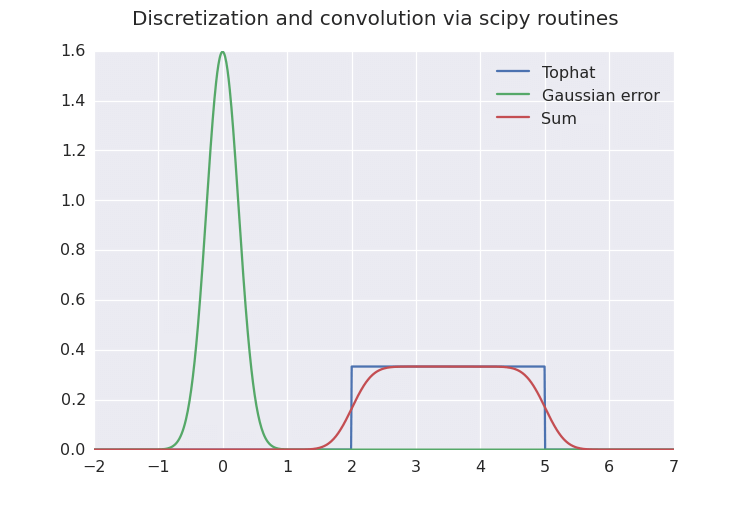
Show me the code already! (Link to online IPython Notebook.)
Recently I've been working on a project involving a bit of decision theory, which I hope to get finished up and published soon. In the process of figuring out how to calculate exactly what I need, I've also been exploring the landscape of probabilistic programming within Python. There are a lot of potentially relevant tools out there, with packages like Statsmodels, scikit-learn, and PyMC all reaching maturity, with large feature-sets and pretty good documentation. Unfortunately, nothing did quite what I wanted, so I've ended up rolling my own for much of it, learning to use pandas as a building block along the way (which is awesome). I explored a couple of problems that fit nicely into a single notebook / post. So, here's my take on how to convolve PDFs in Python., and you can find the source here.
The short version is that I'd recommend two possible approaches - if your PDFs are one-dimensional and your transform is well behaved, roll your own SumRv (summed random variate) class using scipy. Otherwise, you'll probably want to run importance sampling and KDE-smoothing, using a weighted-KDE code like that in statsmodels. In my (highly un-scientific) benchmarking, the latter approach is about 5 times slower for a basic 1D PDF, so you could just adopt that approach anyway and keep things simple.
Finally, I should note that this was very much a learning exercise - I'm no expert in the above packages, so if you know a better way, please let me know!